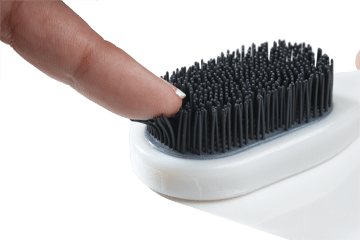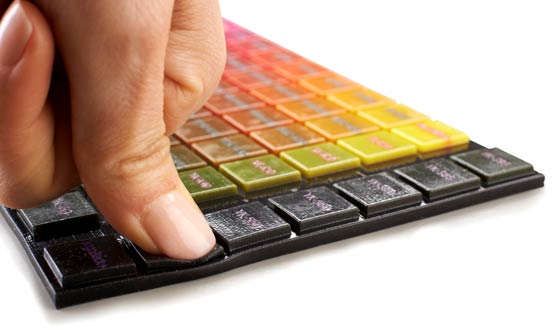Overview
The best way to appreciate a product is to feel it in your hand. Polyjet 3D printing technology offers a wide range of material options to produce a prototype simulating your end part. In order to improve the product’s ergonomic comfort many industries use soft touch coating in their product design to authenticate future products. In automotive, engineers use soft touch in the design and development of interior products such as knobs, pulls and handles.


Application
The dual-jet process can combine materials in several ways, enabling the simultaneous use of two different rigid materials, two flexible materials, one of each type, any combination with transparent material, or two jets of the same material. Two perfectly synchronized printing heads are designated for each material, including the support material. Connex printing systems can produce prototypes that possess properties that mimic traditional elastomeric materials including EPDM and NBR. This means you can evaluate a design that incorporates soft touch areas. Several rubber–like materials with different shore values can be printed at the same time and evaluated on the design model. The model can then be tested on a focus group as well as on potential customers to be able to measure how comfortable and easy to use the product is. Issues such as a product’s impact resistance can also be evaluated.
Process
Save your desired design in separate STL files for each part of your assembly for soft touch areas and other rigid parts. Parts can be printed in different colours afterwards to visually separate each area of the model.
Label each part that you evaluate with its relevant shore value. Labeling will help you later quickly determine which shore value represents the best score in your evaluation criteria tests. Lastly, create a mechanism that enables you to mount the soft touch part on your full assembly of rigid and soft parts. 3D printing systems like the Connex3 can print up to nine different materials in one build process with assembly afterwards for each part on the model for evaluation.